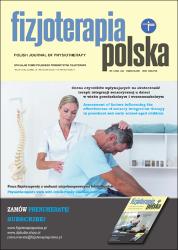| dc.contributor.author | Arslan, Sena Gizem | |
| dc.contributor.author | Budak, Miray | |
| dc.contributor.author | Yılmaz, Mahmut Sinan | |
| dc.date.accessioned | 2024-03-20T11:22:33Z | |
| dc.date.available | 2024-03-20T11:22:33Z | |
| dc.date.issued | 2024 | en_US |
| dc.identifier.citation | Arslan, S. G., Budak, M. ve Yılmaz, M. S. (2024). Effects of structured exercise program on severity of dizziness, kinesiophobia, balance, quality of sleep, activities of daily living and quality of life in bilateral vestibular hypofunction: Case study. Fizjoterapia Polska, 2024(1), 18-22. https://dx.doi.org/10.56984/8ZG2EF8475 | en_US |
| dc.identifier.issn | 0025-7974 | |
| dc.identifier.issn | 1536-5964 | |
| dc.identifier.uri | https://dx.doi.org/10.56984/8ZG2EF8475 | |
| dc.identifier.uri | https://hdl.handle.net/20.500.12511/12382 | |
| dc.description.abstract | Background and Purpose. The vestibular rehabilitation is an exercise-based method, aiming to maximize central nervous system(CNS) compensation at vestibular nuclear and other CNS levels for vestibular pathology. A minimal number of studies have documented the impact of Vestibular rehabilitation on the recovery rate of patients with Bilateral Vestibular Hypofunction(BVH). The purpose of this study was to investigate the effectiveness of structured vestibular rehabilitation (VR) programs on severity of dizziness, kinesiophobia, balance, quality of sleep, activities of daily living(ADL) and quality of life(QoL) in subjects with chronic BVH. Case Description. Three participants diagnosed with BVH who suffered from severity of dizziness, kinesiophobia, balance, quality of sleep, ADL and QoL were included in the study. Intervention. A structured VR program was applied in 50-minute sessions once a week and as a home exercise program 3 days a week over 8 weeks. Outcomes. Participants were evaluated for severity of dizziness with the Visual Analog Scale (VAS), for kinesiophobia with the Tampa Scale of Kinesiophobia (TSK), for balance with the Semitandem, tandem, and standing tests, for quality of sleep with the Pittsburgh Sleep Quality Index (PSQI), for ADL with the Vestibular Disorders Activities of Daily Life (VADL) and for QoL with Dizziness Handicap Inventory (DHI) at the baseline (TO), at 4th week (T1), 8th week (T2), and 20th week (T3) after study started. Conclusion. In conclusion, a twelve-week structured VR program may enhance severity of dizziness, kinesiophobia, balance, quality of sleep, ADL and QoL in participants with chronic BVH. | en_US |
| dc.description.abstract | Tło i Cel. Rehabilitacja przedsionkowa to metoda oparta na ćwiczeniach, mająca na celu maksymalizację kompensacji przez centralny układ nerwowy (CUN) na poziomie jąder przedsionkowych i innych poziomach CUNdla patologii przedsionkowej. Minimalna liczba badańudokumentowała wpływ rehabilitacji przedsionkowej na szybkośćpowrotu do zdrowia pacjentów z obustronnym niedomaganiem przedsionkowym (BVH). Celem tego badania było zbadanie skuteczności zorganizowanych programów rehabilitacji przedsionkowej(VR) na nasilenie zawrotów głowy, kinestofobię, równowagę, jakośćsnu, codzienne czynności życiowe (ADL) oraz jakośćżycia (QoL) u osób z przewlekłym BVH. Opis przypadku. W badaniu wzięło udziałtrzech uczestników zdiagnozowanych z BVH, cierpiących na nasilone zawroty głowy, kinestofobię, problemy z równowagą, jakośćsnu, ADL oraz QoL. Interwencja. Zastosowano zorganizowany program VR w 50‑minutowych sesjach raz w tygodniu oraz jako program ćwiczeńdomowych 3 dni w tygodniu przez 8 tygodni. Wyniki. Uczestnicy byli oceniani pod kątem nasilenia zawrotów głowy za pomocą Wizualnej Skali Analogowej(VAS), kinestofobii za pomocą Skali Kinestofobii Tampa (TSK), równowagi za pomocą testów półtandemowych,tandemowych i stojących, jakości snu za pomocą Indeksu Jakości Snu Pittsburgh (PSQI), ADL za pomocą Inwentarza Codziennych Czynności w Zaburzeniach Przedsionkowych (VADL) oraz QoL za pomocą Inwentarza Uciążliwości Zawrotów Głowy (DHI) na początku badania (T0), w 4.tygodniu (T1), 8.tygodniu (T2)i 20.tygodniu (T3) po rozpoczęciu badania. | en_US |
| dc.language.iso | eng | en_US |
| dc.publisher | DJ Studio | en_US |
| dc.rights | info:eu-repo/semantics/openAccess | en_US |
| dc.subject | Bilateral Vestibular Hypofunction | en_US |
| dc.subject | Dizziness | en_US |
| dc.subject | Kinesiophobia | en_US |
| dc.subject | Balance | en_US |
| dc.subject | Quality of Sleep | en_US |
| dc.subject | Quality of Life | en_US |
| dc.subject | Obustronne Niedomaganie Przedsionkowe | en_US |
| dc.subject | Zawroty Głowy | en_US |
| dc.subject | Kinestofobia | en_US |
| dc.subject | Równowaga | en_US |
| dc.subject | Quality of Sleep | en_US |
| dc.subject | Quality of Life | en_US |
| dc.title | Effects of structured exercise program on severity of dizziness, kinesiophobia, balance, quality of sleep, activities of daily living and quality of life in bilateral vestibular hypofunction: Case study | en_US |
| dc.title.alternative | Wpływ zorganizowanego programu ćwiczeń na nasilenie zawrotów głowy, kinestofobię, równowagę, jakość snu, czynności życia codziennego oraz jakość życia w przypadku obustronnego niedomagania przedsionkowego: Studium przypadku | en_US |
| dc.type | article | en_US |
| dc.relation.ispartof | Fizjoterapia Polska | en_US |
| dc.department | İstanbul Medipol Üniversitesi, Sağlık Bilimleri Fakültesi, Ergoterapi Bölümü | en_US |
| dc.authorid | 0000-0003-0552-8464 | en_US |
| dc.identifier.volume | 2024 | en_US |
| dc.identifier.issue | 1 | en_US |
| dc.identifier.startpage | 18 | en_US |
| dc.identifier.endpage | 22 | en_US |
| dc.relation.publicationcategory | Makale - Uluslararası Hakemli Dergi - Kurum Öğretim Elemanı | en_US |
| dc.identifier.doi | 10.56984/8ZG2EF8475 | en_US |
| dc.institutionauthor | Budak, Miray | |
| dc.identifier.scopus | 2-s2.0-85186875331 | en_US |
| dc.identifier.pmid | 37505139 | en_US |
| dc.identifier.scopusquality | Q4 | en_US |


















